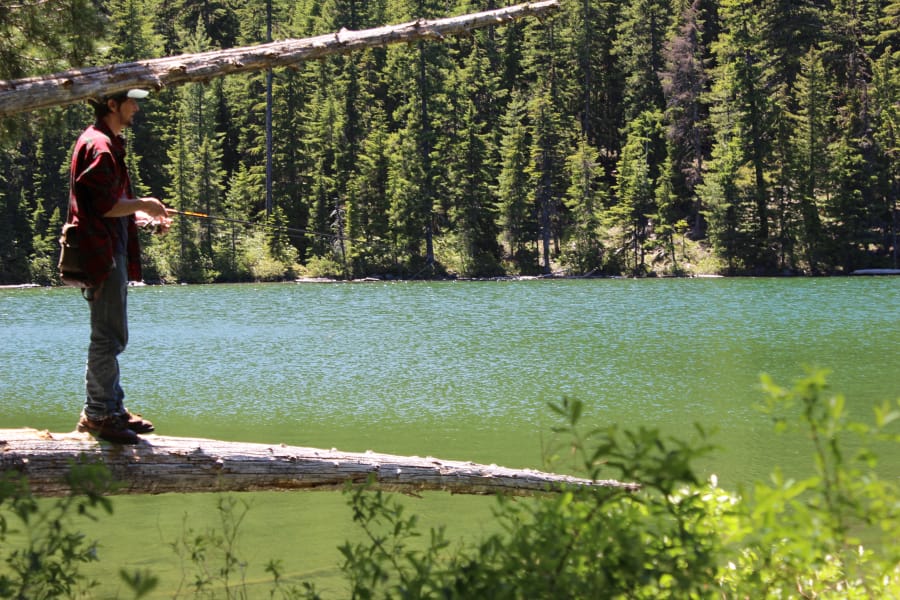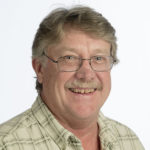Mists hovered just over the surface of the small mountain lake. Rising trout dimpled the water as they gently sipped hatching bugs. My second cast brought a solid hook-up, and I battled the chunky brook trout to the bank.
I stopped fishing long enough to photograph and admire the fish’s bright colors. My partner had already caught a couple nice brookies, too. It looked as though we would be catching trout all day.
But just like that they turned off. We fished the little lake for another hour before calling it quits, and we hiked to the next lake over. It also held brook trout, smaller, but they were eager biters.
There were other opportunities, other lakes nearby, so we shouldered our packs to give them a try. We hit a number of high Cascades lakes that day. We never saw another angler.
Solitude, stunning alpine scenery, and unpressured trout are the reward for sweating along a trail and swatting mosquitos. Small prices to pay for plying pristine lakes for trout that rarely see a bait.
We were fishing the Indian Heaven Wilderness within the Gifford Pinchot National Forest, where eons of glacial forces have carved out these little gems all over the highland plateau.
Historically devoid of fish, they are now stocked regularly by the Washington Department of Fish and Wildlife with a variety of trout.
Most of the trout come from the Goldendale Fish Hatchery. The hatchery manager, Jesse Miller, reports that they stock most of the high-elevation lakes on a yearly basis with fingerlings.
Eastern brook trout are the most commonly stocked species, Miller said
“But we may put some cutthroat in, and in some the lakes they even put a few rainbows in there, too,” he said. “We are kind of on a three-year rotation for the different species.”
These lakes have a short summer growing season, so he said it takes a while until they are big enough to target.
“To get to be a catchable size fish it’s going to take about three to four years,” said Miller.
These are also a much different kind of trout fishery from the lowland lakes.
“People go up there with the mindset from when they fish lowland lakes,” Miller said, “but in these lakes the water is crystal clear. With that clear water you’ve got to either have a bumper of some sort of fluorocarbon or clear leader so you are not spooking those fish as much.”
“You’ve got to get down to 4 or 6 pound (leader), and it must be clear.”
The clear water also means the fish can spot you easily. If they do, it’s game over.
Miller promotes keeping a low profile, wearing dull colored clothing, and sneaking up on the fish, which are often right near the bank.
Conventional gear offers many easy ways to catch high-mountain trout, but spinners are hard to beat. Rooster tails and Panther Martins are good choices, as are spoons such as Kast-masters.
For the fly fisherman, it’s not so easy.
“There is so much bug life up there you are not going to get down to ‘use this and you will kill them,” Miller said. “You have to watch what’s hatching out there, and match it.”
Timing is important, too.
“Fish that first light in the morning when it’s nice and cool, and late in the evening,” he said. “That is your best chance as those bigger fish are coming up out of the depths, and are cruising the shoreline looking for bugs or other fish.”
There are so many mountain lakes that the biggest question may be where to go. Miller did offer some suggestions.
“On the west side of Indian Heaven, there are a number of lakes all in close proximity from the Thomas Lake Trailhead,” he said. “There is Dee, Heather, and Thomas Lake. Thomas is the bigger one. Also, there is Eunice and Brader Lakes. Those are really good lakes.
“Thomas is big enough and deep enough that you can have a lot of holdover fish that are going to get big in there.”
The hike is fairly easy, and the first lakes are within one mile of the trailhead, which is located on National Forest Road 65 about five miles north of the Falls Creek Horse Camp.
“On the east side there is Cultus Lake, Deep Lake, Deer Lake and Lemei Lake, for people that are not afraid to put on a little mileage.”
For a moderate hike, he suggests Wood Lake, and Placid Lake.
For the more intrepid explorer, Miller suggests anglers go to the High Lakes section of the WDFW website. Anglers can search for stocked lakes by county or name, and the site will supply GPS coordinates for any lake you want.
There are a number of savvy trout fishermen that use the coordinates to bush-whack into lakes without trails.
The website also includes the stocking record of each lake, and what species it was stocked with.
Late summer and early fall may be the best time to hit these waters. Cool nights and short days push the fish to feed ahead of winter, and the mosquitoes are not as bad.
There are so many choices that it can seem overwhelming. Miller’s advice is to just pick one lake out, give it a try, and go from there.
WDFW High Lakes: https://wdfw.wa.gov/fishing/locations/high-lakes





